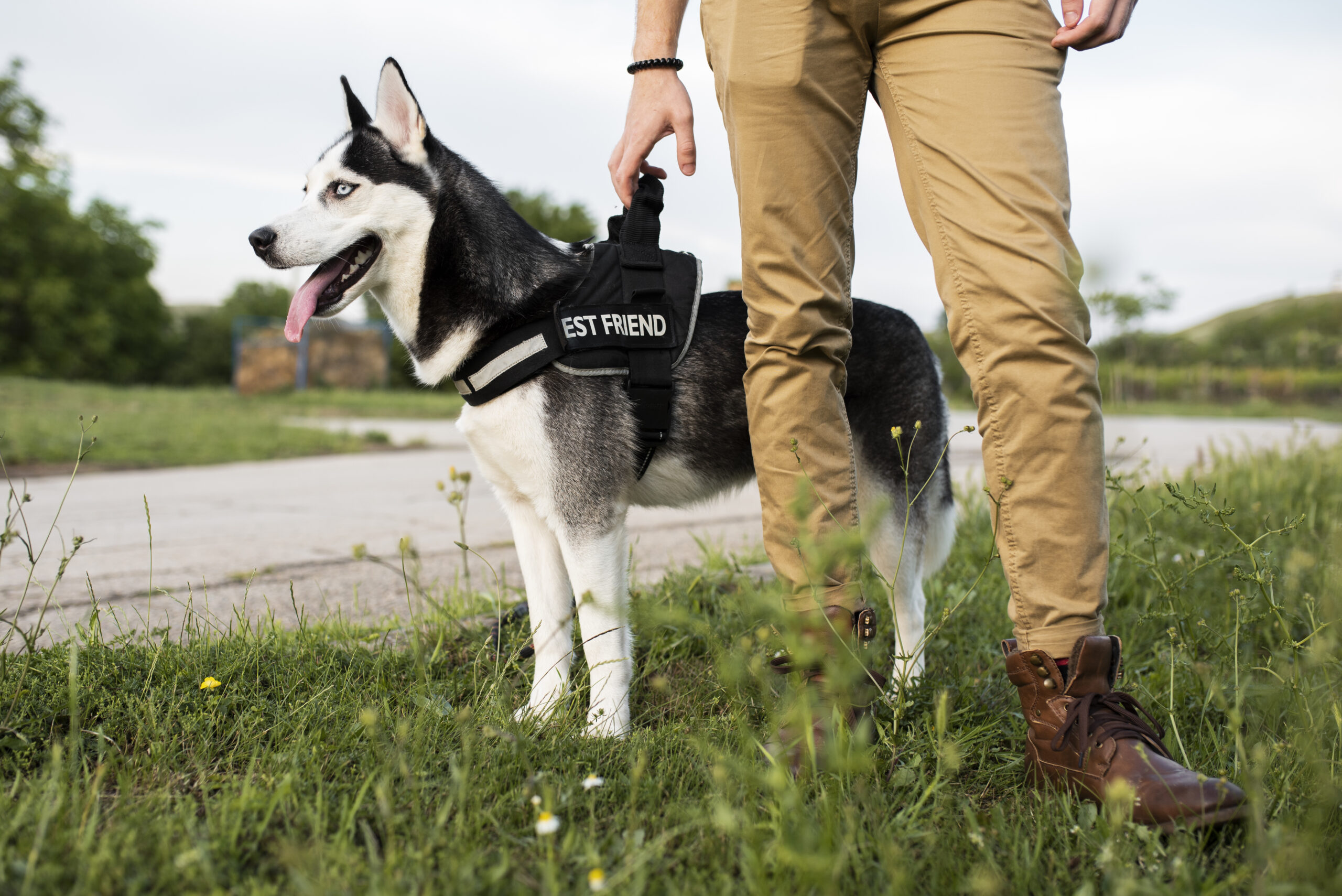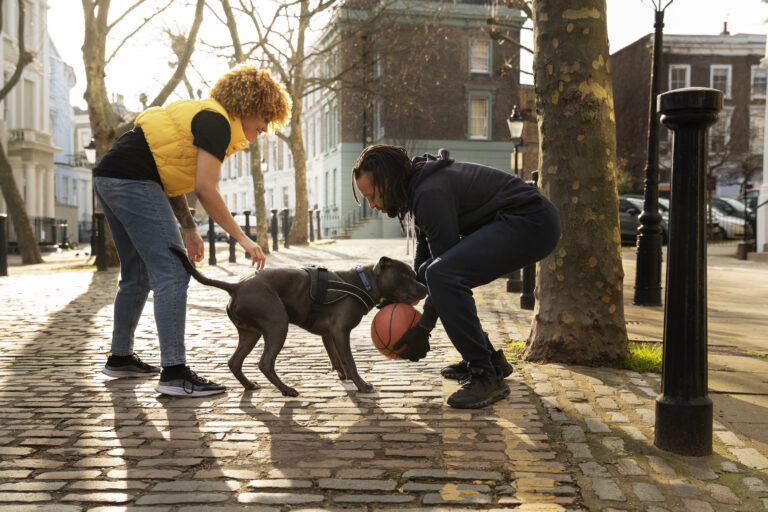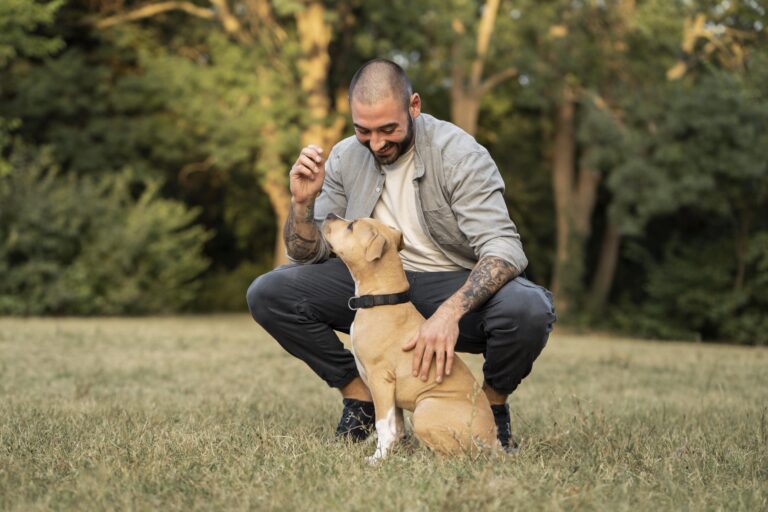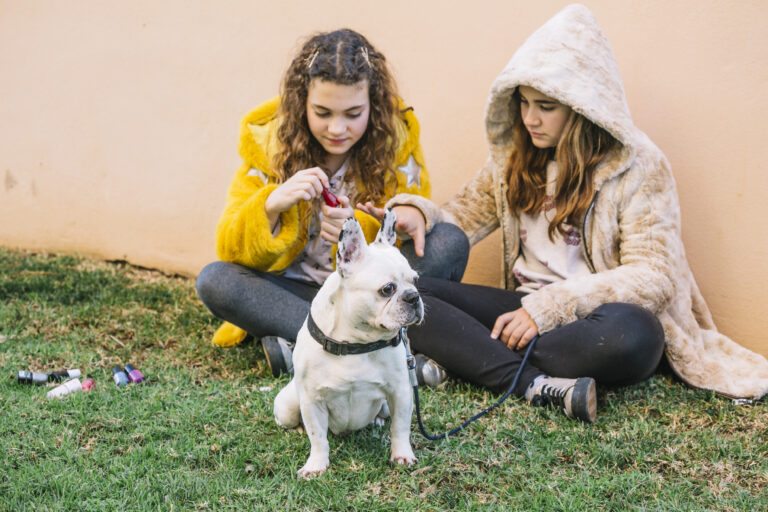Training Service Dogs: Understanding Breed Suitability And Special Techniques
Training service dogs requires a deep understanding of breed suitability and specialized techniques tailored to meet the needs of individuals. Selecting the right dog for this important role is crucial for success.
A staggering 70% of service dog candidates are disqualified before completing their training. This emphasizes the nuanced process of selecting a breed suitable for service dog work. The right breed and individual dog temperament can mean the difference between a successful service partner and a washed-out prospect. Labrador Retrievers, for instance, are known for their intuitive nature and adaptability, making them prime candidates.
Historically, the evolution of service dog training has reflected shifts in both canine behavioral understanding and specialized training techniques. With ongoing advancements, trainers now employ techniques that prioritize positive reinforcement and tailor regimes to fit breed-specific needs. As research evolves, data suggests a remarkable 50% increase in training efficiency when such tailored approaches are implemented. This ongoing study continues to refine our understanding of the relationship between breed suitability and training success.

Training Service Dogs: Highlighting Breed Suitability
Service dogs require specific traits to excel in their roles, making breed suitability crucial. Not all dog breeds have what it takes to become a service dog. For instance, breeds like Golden Retrievers and Labrador Retrievers are often chosen. They have a natural eagerness to please and strong obedience skills. These qualities make them reliable and effective in service work.
Different tasks call for different breeds. While some dogs guide individuals with disabilities, others assist in medical response. Breeds like German Shepherds fit well in roles requiring alertness and agility. On the other hand, Poodles, known for their intelligence, can also excel in specific service roles. Consider breed strengths and weaknesses when selecting a potential service dog candidate.
A dog’s temperament is just as important as its physical abilities. Calmness and focus are key traits needed for service tasks. However, physical strength is also vital, especially for roles requiring mobility assistance. In some cases, mixed breeds can be excellent service dogs too. Evaluating each dog’s unique abilities can help determine their suitability.
Breeders and trainers must assess both individual dogs and their breeds. A comprehensive assessment ensures the right traits are present. Training techniques then harness these traits effectively. This approach guarantees a well-suited service animal for diverse roles. It benefits both the dog and the individuals relying on their service.
Factors Influencing Breed Suitability for Service
Breed temperament plays a major role in determining suitability for service. Calm, gentle, and intelligent dogs adapt well to service tasks. High-energy breeds might struggle in roles requiring focus and patience. Importantly, a dog’s willingness to learn influences training success. Naturally attentive breeds often rise as top contenders for service work.
Physical traits also contribute to choosing the right breed. Size and strength can be crucial for certain tasks, such as mobility assistance. A small breed might be ideal for emotional support, providing comfort without intimidation. On the other hand, larger breeds might excel at carrying or guiding duties. It’s all about matching the physical capability to the task at hand.
Health factors need consideration when selecting service dogs. Breeds prone to genetic health problems may face challenges in service roles. Maintaining top-notch health ensures longer working life and efficiency. Regular veterinary check-ups are necessary for service dogs. This keeps them healthy and ready to perform their duties.
Lastly, training adaptability is an essential criterion. Some breeds naturally respond better to training techniques. Flexible dogs that adapt well to changes can learn complex tasks quickly. Being able to learn and adapt ensures the service dog meets various needs. Each breed’s unique traits must be weighed carefully to ensure the best fit.
The Role of Breed Temperament and Physical Abilities
Breed temperament is essential for the success of service dogs. Dogs that are naturally calm and friendly make excellent companions. They need to be reliable and not easily distracted. This ensures they stay focused on their training and tasks. Such temperament helps them work effectively in various environments.
Physical abilities are equally important when selecting a service dog. Different tasks require different physical strengths. For example, a guide dog needs endurance to walk long distances. In contrast, a service dog assisting with mobility needs the strength to support weight. These physical attributes vary significantly among breeds.
Matching temperament and physical abilities with the service dog’s role is crucial. A mismatch can lead to challenges in training and performance. Evaluate a breed’s natural tendencies before selecting a service dog. Understanding these traits benefits both the handler and the dog. It makes the partnership more effective and harmonious.
Some breeds excel in intelligence and adaptability, which aids training. Breeds like Border Collies are known for their quick learning abilities. This trait makes teaching complex tasks easier and faster. Such abilities can influence the success of the service dog significantly. Smart and adaptable dogs often find solutions on their own, enhancing their value in service roles.
Special Techniques in Training Service Dogs
Training service dogs involves unique techniques tailored to their roles. Positive reinforcement is paramount, rewarding dogs with treats or praise for correct behaviors. This method encourages learning and boosts the dog’s confidence. Consistency in training is also crucial, helping the dog understand expectations. Over time, this builds a strong foundation for more advanced tasks.
Another key technique is clicker training, which uses a small device to create a clicking sound. This sound marks desired behaviors and is immediately followed by a reward. The dog learns to associate the click with a positive result. Clicker training helps in precise communication between the trainer and the dog. It’s especially useful for teaching complex commands.
Socialization plays a huge role in service dog training. Exposing dogs to a variety of environments helps them stay calm in new situations. They learn to ignore distractions and stay focused on their handler. Meeting people and other animals enhances their adaptability. This trait is vital for service dogs, who work in varied settings.
Obstacle courses test a dog’s agility and obedience, important for helping people with special needs. These courses simulate real-life situations the dog might encounter. Navigating oversteps, through tunnels, and around barriers teaches problem-solving skills. Practicing these tasks regularly enhances their physical and mental fitness. Both are beneficial for the demanding work of a service dog.
Finally, service dogs undergo task-specific training matching their intended role. For instance, a dog trained for medical alert will learn to recognize signs of a health crisis. Others may be taught to fetch items or open doors. Customizing training ensures the dog meets the specific needs of their handler. This enhances their effectiveness and reliability in service work.

The Impact of Positive Reinforcement in Training
Positive reinforcement plays a crucial role in dog training, particularly for service dogs. By rewarding desired behaviors, dogs are motivated to repeat them. This method builds trust and strengthens the bond between trainer and dog. Unlike punishment, which can create fear and anxiety, positive reinforcement encourages a willing attitude. Happy dogs learn faster and more effectively.
Rewards can vary, including treats, praise, or playtime. Each dog has their preference, so trainers tailor rewards to individual needs. Flexibility in choosing rewards keeps sessions engaging and fun. This adjustment boosts the dog’s enthusiasm for learning new tasks. Consistently rewarding good behavior fosters a positive training environment.
The timing of reinforcement is vital to its success. Immediate rewards help dogs link the reward with the desired action. A slight delay might confuse the dog, leading to slower progress. Trainers use this immediate feedback to refine the dog’s learning process. This precision in timing solidifies behavior patterns more quickly.
Positive reinforcement reduces stress for both the dog and the handler. It promotes a comfortable atmosphere where learning thrives. Dogs feel valued and appreciated, making them eager to participate. This stress-free environment is particularly important for service dogs. They need confidence to handle challenging tasks in various settings.
This method is beneficial in preparing dogs for varied service roles. For example, it can encourage consistency in alerting to medical conditions. Also, it helps in teaching complex sequences of tasks. Through repetition and reinforcement, service dogs develop reliability. This reliability is critical for ensuring safety and support for those in need.
Breed-Specific Training Success Stories
Golden Retrievers are often hailed as exemplary service dogs. Their friendly nature and willingness to please make them naturals in training programs. One notable story involves a Golden named Max. Max learned to assist a handler with mobility issues, expertly opening doors and retrieving items. The success attributed to his breed’s calm temperament and intelligence.
German Shepherds also feature in many success stories, thanks to their strong work ethic. A Shepherd named Rex became a lifeline for an individual with epilepsy. Trained to alert of impending seizures, Rex has saved lives on multiple occasions. His breed’s natural alertness was a key factor in his ability to perform this critical task. Rex’s story continues to inspire many in the service dog community.
Labrador Retrievers show impressive skills in various service roles. A Labrador named Bella assists visually impaired people, guiding them safely through busy streets. Her reliable, focused nature makes her an invaluable companion. Labradors’ eagerness to learn and adaptability highlight their training success. Bella’s story showcases how breed-specific traits enhance service roles.
Poodles, known for their intelligence, excel in unique service roles too. A Poodle named Charlie was trained to detect allergens, alerting a child to potential dangers. Charlie’s keen sense of smell and quick learning cemented his success. This breed’s hypoallergenic coat also made him an ideal companion for allergy-sensitive families. Charlie’s story provides hope for those in need of such specialized assistance.
Mixed breeds can achieve service success, blending traits from different lineages. Daisy, a mix of Border Collie and Labrador, exemplifies this. Daisy assists in psychiatric service, offering comfort and support with remarkable empathy. Her diverse background lends her an adaptable and loving nature. Daisy’s success story proves that the right blend of traits can create exceptional service dogs.
Frequently Asked Questions
Training service dogs requires a blend of skill and understanding. Here, we explore common queries about breed suitability and special techniques that contribute to successful training.
1. What qualities make a dog breed suitable for service work?
Service dogs need specific qualities to perform their tasks effectively. They should be calm, intelligent, and eager to please. Breeds like Labrador Retrievers often excel due to their friendly and obedient nature. These traits help them adapt to learning and execute tasks reliably.
Moreover, physical attributes such as size and strength play a role. A breed’s health and longevity are also essential factors. Each trait ensures the dog can handle various duties safely and comfortably. By choosing the right breed, trainers can maximize service potential.
2. How does positive reinforcement enhance service dog training?
Positive reinforcement rewards desirable behaviors, encouraging dogs to repeat them. This method builds a strong bond between the handler and the dog, promoting trust and cooperation. Service dogs trained with positive reinforcement learn tasks faster and enjoy their work environment.
The timing of rewards is critical, ensuring the dog associates the reward with the correct action. This strategy enhances focus and boosts learning effectiveness. By using treats, praise, or play, trainers create a motivating and stress-free training environment that fosters success.
3. Which challenges might arise when training service dogs?
Training service dogs can be challenging due to individual differences. Some dogs may struggle with distraction or anxiety. Overcoming these obstacles requires patience and specialized techniques. Trainers need to adapt methods to fit the dog’s temperament and learning pace.
Additionally, environmental factors can disrupt training. Trainers must introduce dogs to varied settings while ensuring their comfort. Consistent exposure and positive reinforcement help dogs adjust to new scenarios, building resilience and focus needed for service work.
4. Are mixed breeds effective as service dogs?
Mixed breeds can be successful service dogs if they possess key traits. A dog’s temperament, intelligence, and physical abilities are more crucial than pedigree. Mixed breeds often blend desirable traits from different breeds, making them versatile service partners.
Training should focus on the individual dog’s strengths and limitations. Assessing each mix’s unique abilities helps tailor training for optimal results. Mixed breed service dogs can excel in specific roles, offering valuable support to their handlers.
5. Why is early socialization important for service dogs?
Early socialization is critical for service dogs to develop confidence and adaptability. Exposure to various environments, people, and other animals helps them remain calm and focused. Socialization builds resilience, ensuring they handle unpredictable situations effectively.
Introducing young dogs to diverse experiences prevents fear and anxiety. It prepares them to work safely and comfortably in public. Early socialization contributes to a service dog’s success by enhancing their ability to assist handlers seamlessly and efficiently.

Conclusion
Training service dogs is an intricate process that hinges on understanding breed suitability and employing special techniques. Each breed carries unique traits that can be maximized through tailored training methods. This ensures that service dogs are well-equipped to meet the specific needs of their handlers, enhancing quality of life.
The role of positive reinforcement and early socialization cannot be overstated in shaping a dog’s ability to perform effectively. By focusing on these fundamental aspects, trainers can develop confident and reliable service animals. The commitment to this detailed training process not only impacts the dogs but also greatly benefits the individuals they serve.




